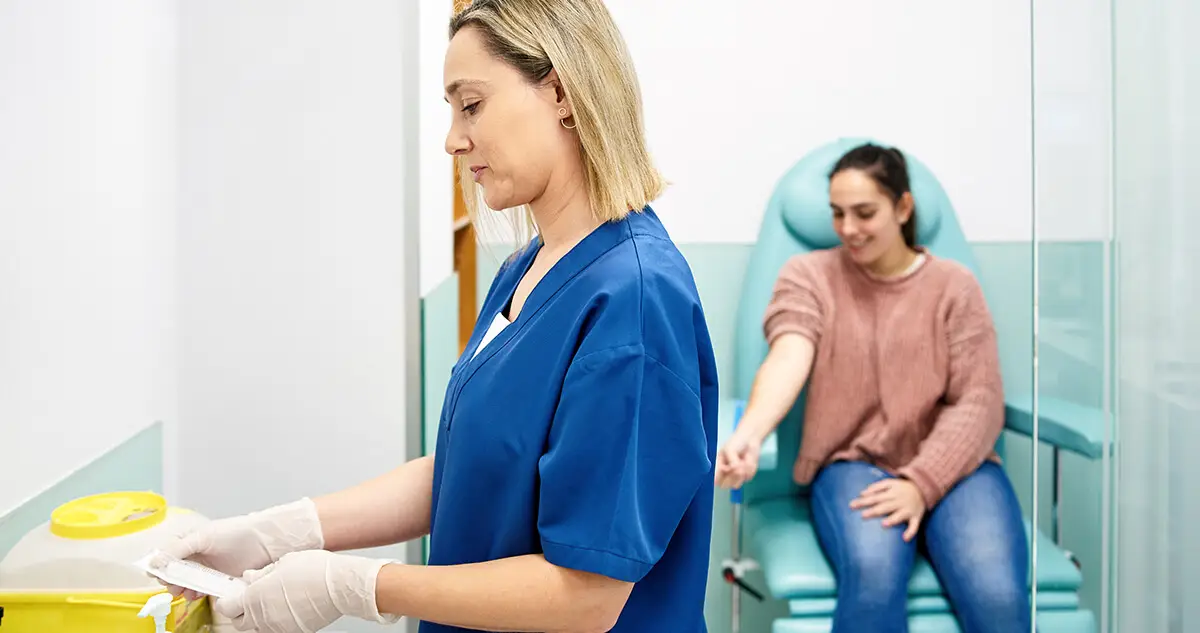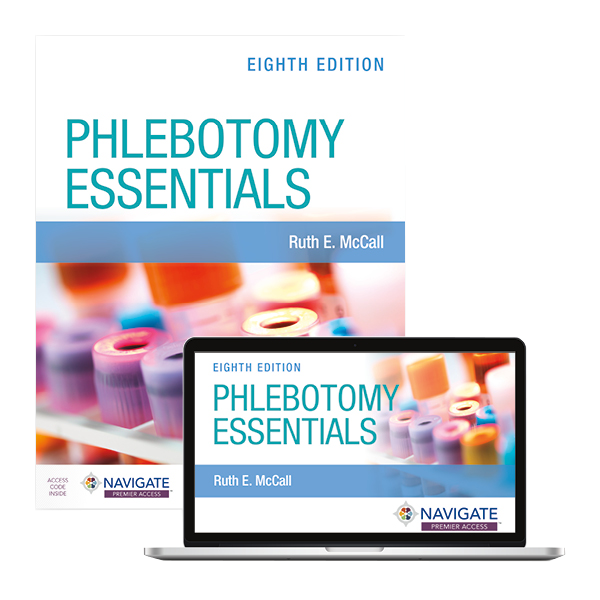The Secret to Preparing Students to Pass Phlebotomy Certification Tests

The demand for phlebotomists in healthcare is increasing. In fact, the U.S. Bureau of Labor Statistics projects that employment of phlebotomists will grow 8 percent in the next decade, 3 percent faster than all other jobs.
Instructors need to be able to put themselves in the best position to prepare their students to enter the workforce quickly. The best way to do this is to have the best plan when it comes to preparing students to pass relevant licensing exams in phlebotomy. Read on for one approach you can incorporate in your classroom.
Why is it important that course content is mapped to NAACLS competencies?
The National Accrediting Agency for Clinical Laboratory Sciences (NAACLS) grants recognition to clinical laboratory science education programs that meet established standards. NAACLS recognition for phlebotomy programs involves an approval process.
One part of the approval process is verification that the program instruction covers a list of competencies defined by NAACLS. The competencies address specific knowledge and skills required to successfully function as phlebotomists.
They are an indication to instructors and students that graduates of the program should be able to meet entry level job requirements, and pass a national certification exam. This is important even if the program does not choose to be approved by NAACLS. The competencies are also helpful for phlebotomy programs seeking or renewing NAACLS approval.
How can instructors prepare students to pass phlebotomy certification tests?
Certification exam questions typically relate to the NAACLS competencies and the Clinical and Laboratory Standards Institute (CLSI) venipuncture and capillary puncture standards.
As a phlebotomy instructor, make certain chapter exam questions cover the competencies associated with the chapter that you’re teaching in the classroom. This way, an individual who completes and passes the program with a grade of C or above, has a reasonable expectation of being able to pass a national certification exam.
This is especially true if the exam is taken soon after graduating from the program and the applicant does a thorough review of the material before taking the exam.
Phlebotomy Essentials, Eighth Edition
Phlebotomy Essentials, Eighth Edition covers all the NAACLS competencies and the applicable Clinical CLSI standards and guidelines. The companion workbook and the exam review book help students reinforce this info and pass the licensure exams.
Request Your Digital Review Copy
What are some activities or projects that instructors can integrate into their phlebotomy class to drive student learning outcomes?
Some ways to integrate activities that drive student learning outcomes include:
- Give students one of each type of blood collection tube, pair students up with another student, and have them quiz one another on the tubes and any additives in them.
- Have students create flash cards with a color drawing or photos of the tube on one side, the additive(s) listed on the other, the lab department(s) that use the tube, and examples of tests that require the tube.
- Have students create scenarios of different types of patient encounters and practice how to handle each type.
- Assign identification to artificial arms used for lab practice and create test orders and labels to go with the names so that students can practice bedside manner, patient identification, correct selection of tubes, and order of draw. This also helps enhance verbal and communication skills.
- If you’re using the Phlebotomy Essentials Student Workbook, assign chapter activities as part of classwork or homework.
How can instructors prepare students for a career as a phlebotomist?
- Teach them to be team players.
- Assign students to teams for setting up equipment, practicing skills and other activities, and putting equipment away at the end of lab class. Change team members periodically. This also reinforces responsibility.
- Assign theory team tests where everyone has to agree on an answer, and those who disagree have to write or mark their test paper or computer test with the answer the majority agrees on.
- Underscore the importance of reliability.
- Give a quiz at the beginning of class and those who are late (by 5 or more minutes, for example) will have to take the quiz, but lose points or receive a zero. Make this clear in the syllabus.
- Have an absence policy in the syllabus that includes the number of days of class students can miss before being dropped from the class.
- Have strict deadlines for class assignments.
- Get them to understand the value of compassion and empathy.
- Practice situations where compassion and empathy must be displayed.
- In pairs, have one student be the phlebotomist and one the patient who is grumpy, doesn’t want their blood drawn, or some other typical situation a phlebotomist may encounter.
- Teach communication skills.
- Practice bedside manner scenarios.
- Direct them to observe well.
- Create scenarios with signs students might encounter in patient hospital rooms. Have them record what they observe and what, if anything, they need to do.
- Have students identify collection requirements on sample requisitions and explain how they will follow them or verify that they have been followed.
- Convey the importance of a positive attitude and working well under pressure.
- Tell students not to be afraid to make mistakes; and to use them as learning experiences.
- Tell students to take their time to do phlebotomy skills correctly because speed will come naturally when they have the skills mastered.
About the Author:
Ruth McCall is the author of Phlebotomy Essentials, Eighth Edition. She received her Bachelor of Science degrees from the University of Iowa and her medical technology certificate from St. Joseph's School of Medical Technology in Phoenix, Arizona. She has worked or taught in the clinical laboratory sciences and healthcare education fields ever since. She was the director of the phlebotomy and clinical laboratory assistant programs at Central New Mexico Community College in Albuquerque, New Mexico, for 18 yeas until she retired. She recently returned as a part-time phlebotomy instructor.